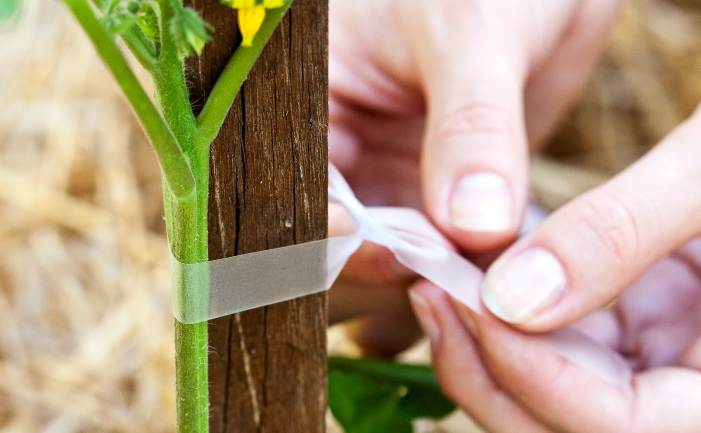The general consensus these days is that stakes weaken plants, and they should not be used. However, there are times when it is necessary to give your plants some support. For instance Don staked a melaleuca which had fallen over, to prevent the rootball from rocking in the wind. After gently pulling it back to its natural position he tied it to a stake with budding tape, making sure that there was still room for movement. Budding tape is a good temporary tie for small plants – ties should not last forever because they cause rubbing and girdling of the stems.
Don also staked a young wattle because it was growing over a path and needed training back to a more vertical position. He hammered a stake into the ground about 30cm (1′) away from the trunk, to avoid damaging the roots. The wattle was tied to the stake using hessian webbing, again leaving plenty of room for the plant to move. Hessian is excellent for tying larger plants. It’s a soft material which won’t abrade the stems, and it rots through fairly quickly. The wattle was no longer hanging over the walkway, so Don decided not to attach a second tie higher up the trunk. Stakes and ties do weaken plants, so it’s best to only use them when absolutely necessary.
Further information
Budding tape costs around $6.75 for 100m (320′). The price of hessian webbing is about $13.50 for 30m (98′), or 60c per metre (3′). Both are available at nurseries and garden centres.



